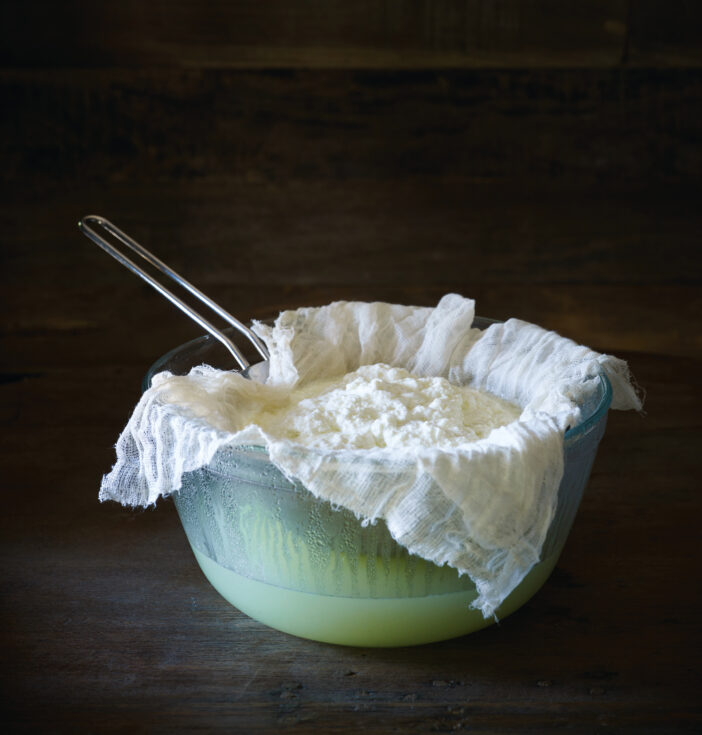- A few hours before making the cheese, take the milk and cream out of the refrigerator to bring them to room temperature.
- Sanitize all your tools and equipment by running them through the dishwasher. Leave them in the dishwasher until you are ready to use them.
- Combine the room-temperature milk and cream and the salt in a heavy bottomed pot
- Blend thoroughly with a whisk by dipping or plunging it in and out of the milk, but not stirring.
- Place the pot over medium-low heat and cook slowly, stirring periodically.
- As the milk mixture approaches 150(degrees)F as measured with the thermometer, you may see curds starting to form. Do not stir, but carefully check the bottom of the pan for any curds that might be sticking, using a rubber spatula.
- When the mixture is close to 180 (degrees)F, sprinkle the citric acid across the surface and incorporate it by dipping or plunging the whisk into the mixture; do not stir.
- The curds will continue to form and coagulate, leaving the whey, which will be yellowish-green and just slightly cloudy. If the whey still looks milky white, add a pinch more citric acid and stir into the whey with a rubber spatula to cause more curds to form.
- When the mixture reaches 185 (Degrees)F, turn off heat and cover. Allow to sit for about 20 min undisturbed.
- Meanwhile, line a strainer or colander with wet cheesecloth and place it over a container.
- When the cheese has set and the curds look firm, carefully ladle the curds into the colander, being careful not to break them up. Season the curds lightly with salt as you add them to the colander. The whey will drain off into the container.
- Once you have ladled all the curds into the colander, allow them to drain for about 10 minutes. (Discard whey or reserve for another use.) Keep draining the ricotta until the curds are on the drier side. Transfer to a container with a lid and store, refrigerated, for up to 1 week.
Note: For this recipe, use milk and cream products that are HTST (high temperature, short time) pasteurized rather than ultra-pasteurized.
Use ricotta for lasagna or ravioli fillings, or on toast with honey and jam.

